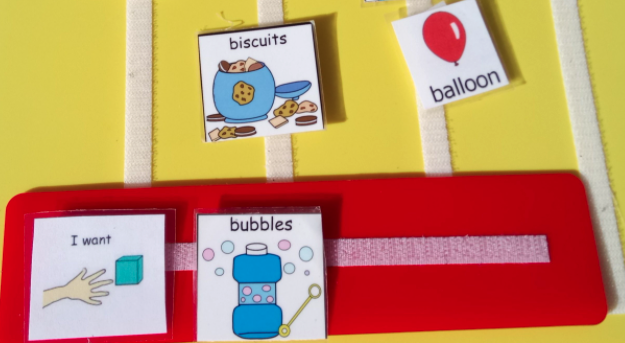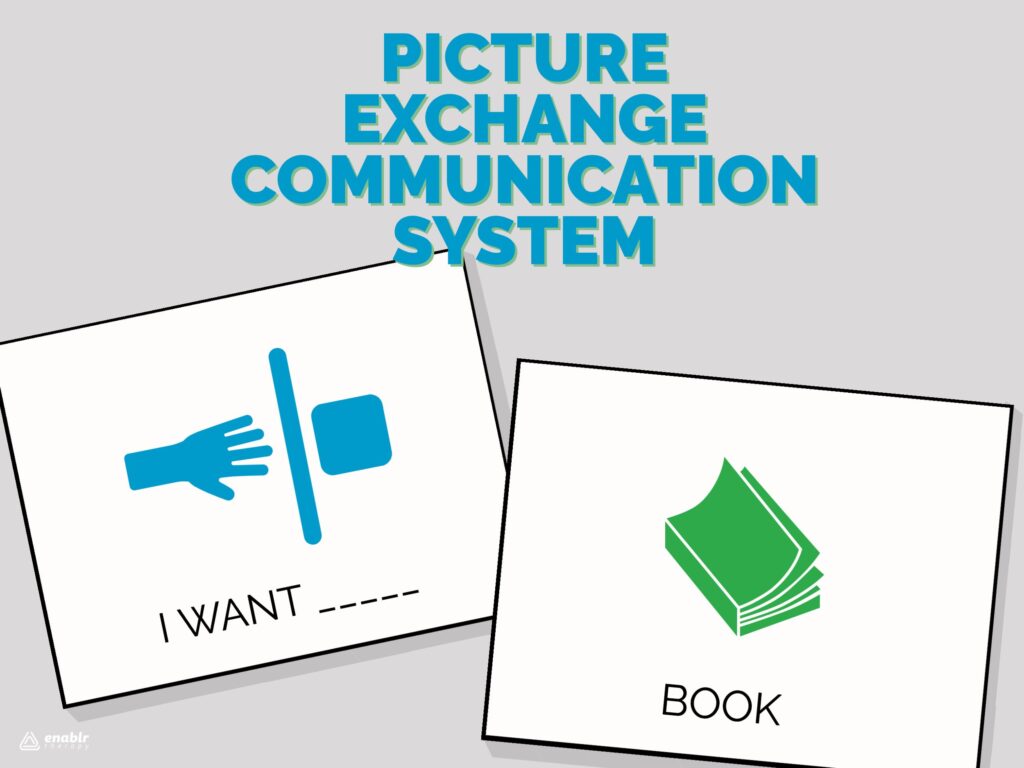
PECS, or the Picture Exchange Communication System, enables individuals who have limited or no verbal language skills to communicate with others through pictures. The system was first developed in 1984 for use with preschool children who had autism. It has since been used with adults and children for a wide variety of conditions including aphasia, apraxia, cerebral palsy, and Down syndrome.
PECS consists of six phases that systematically build skills so that the individual can learn to initiate interactions and communicate with others. The six phases are below.
The Six Phases of Communication:
1. How to Communicate
In this stage, the individual gives a single picture of a highly desired item or activity to a partner who immediately responds to the request. This stage helps the individual to learn that communication is an interaction with others and can help to meet wants and needs.
2. Distance and Persistence
Once a basic communication exchange is mastered, the individual is taught to generalize the exchange to include different people and different places. They will start to travel across the room and persist in the communication efforts.
3. Picture Discrimination
At this phase, the individual learns to select the desired picture when given a selection of two or more pictures. They start to communicate their choice.
4. Sentence Structure
Using a sentence strip, the individual starts to learn to build a sentence using the “I want” phrase and then selecting the picture of the desired picture to complete the sentence (example- “I want bubbles”). This sentence structure is expanded by adding different adverbs, adjectives, and prepositions (example- “I want the red ball”).
5. Responsive Requesting
Learning to respond to the question “What do you want?” is the focus of this phase. Instead of initiating an interaction, they are responding to someone else’s.
6. Commenting
The final stage expands the individual’s communication skills so that they can comment in response to questions like “What do you see?”, “What is that?”, “What do you hear?”. Sentences will start with phrases such as “I see”, “I hear”, “I feel”, and “It is.”
Benefits of PECS
The Picture Exchange Communication System offers numerous benefits for individuals with communication challenges, including:
- Enhanced Communication: PECS provides a means for non-verbal individuals to express themselves and communicate their needs, preferences, and thoughts.
- Increased Independence: By mastering PECS, individuals gain greater autonomy and independence in navigating their environment and interacting with others.
- Language Development: PECS lays the foundation for language acquisition and comprehension, fostering the development of verbal and non-verbal communication skills.
- Social Interaction: Through PECS, individuals can engage in meaningful social interactions, building connections with peers, caregivers, and educators.
- Customization and Flexibility: PECS can be tailored to suit the unique needs and preferences of each individual, with the flexibility to adapt and evolve over time.

Since PECS is highly structured and initially requires an individual to only point to a picture, most individuals can become successful communicators using this system. It is a great low tech, low expense option that can crack the door to communication and self-regulation for non-verbal and minimally-verbal individuals.
Some parents worry that PECS will interfere with their child’s ability to learn to use words. However, research has shown that some children who use PECS will also develop speech. Children will communicate in whatever form is easiest for them. So, as a child develops communication skills and speech, they will utilize verbal communication over selecting pictures once it becomes easier for them. PECS can help a child organize language in a way that they can understand it. For children who remain non-verbal, the skills used with PECS can often transition to speech generating devices, or AAC (augmentative and alternative communication) devices, to future expand language.
PECS is a valuable tool that can give a child speech, enable choice, and foster independence and social relationships. Working with a trained speech language pathologist to establish the communication system can unlock potential and possibilities!


